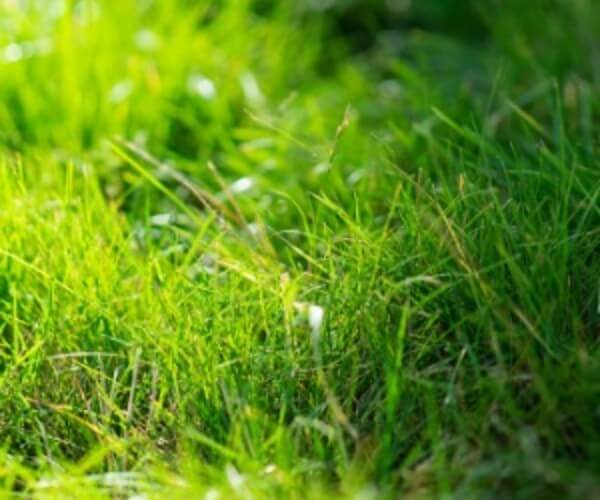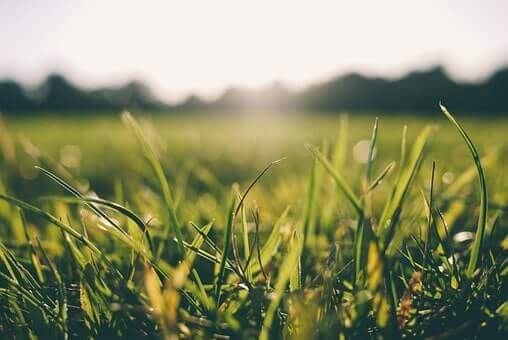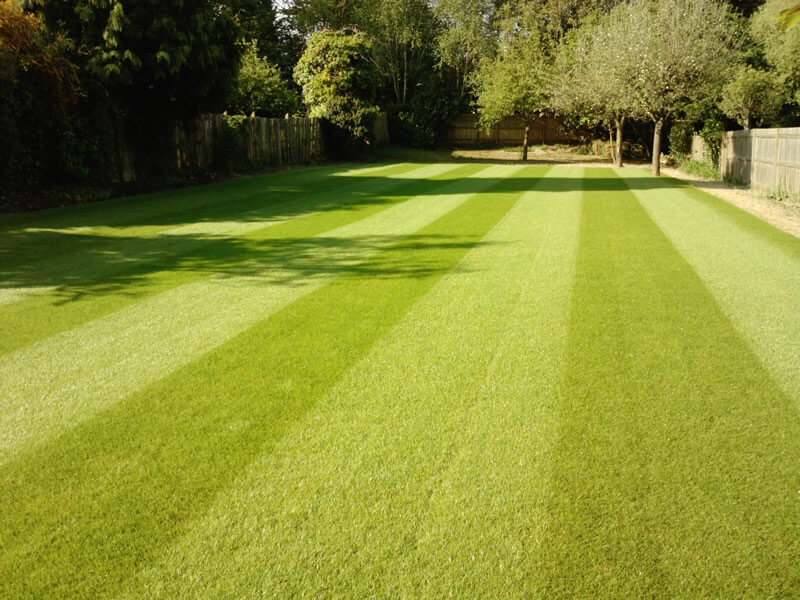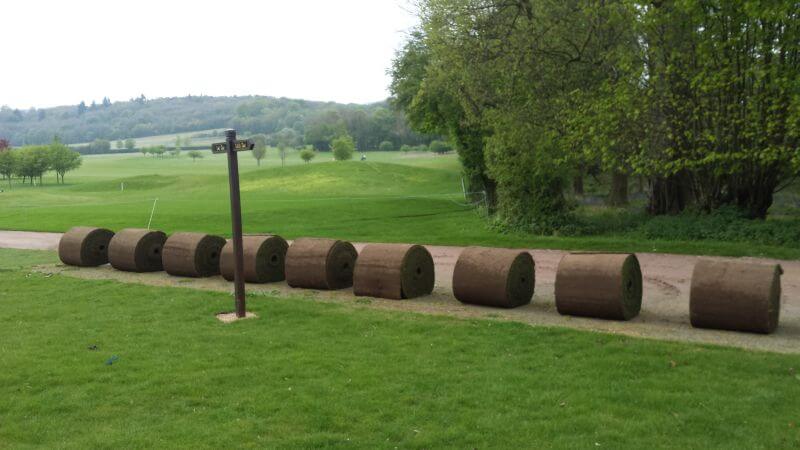- Lawn Turf
- Artificial
- Soil
- Timber
- Composite Decking
- Paving & Stone
Get In Touch With Our Experts Today!
Give us a Call! - Seed & Fertiliser
- Dressing
- Bark

September 07, 2021 Turf Tips
If you’re looking for a quick win in creating a luxurious lawn by laying brand new turf over existing grass, we’re going to stop you there. While it is possible, you won’t get the best result, and we’re here to tell you why.
In short, the old turf underneath your new turf will end up dying and affecting the quality of the fresh grass on top – ultimately, wasting a whole lot of time, money and turf!
You’ll achieve the best lawn results by laying your new turf over freshly (and correctly) prepped soil, not brown, patchy, or weed-ridden old grass.
The consequences of laying new turf over old turf won’t be a pretty sight. Trust us!
We’ve created this guide to illustrate the importance of avoiding this costly mistake and what to do instead.
| Are you still exploring your options for your new turf? Take a look through our range online!
Here at George Davies Turf & Stone, we’re known as the landscaper’s choice for turf, with a great variety of turf rolls at an incredibly high standard. Whether it’s shade-tolerant, wild flower, or simply reliable and resilient turf you’re after, we can help. |
Discover Our Beautiful Turf Options

While you technically can, that doesn’t mean you should.
We actually highly recommend you do not lay fresh turf on top of old turf, because it can damage your lawn even more than it was before.
If you want to be even more convinced that you should carry out the proper lawn prep and installation, here are 10 ways laying new turf on top of old turf can upset your garden.
Turf needs direct contact with quality topsoil to root properly. Laying it over existing grass creates an uneven barrier, preventing strong root anchoring, which often leads to poor growth and patchiness.
If you want your lawn to be vibrant and dense, removing your old turf first is essential.
Old grass can create a thatch layer that holds moisture, especially in clay-heavy UK soils. This leads to standing water, rot, moss growth, and fungal diseases. Proper drainage is essential to avoid severe waterlogging, which can make your lawn completely unusable.
This is why we recommend that your new turf have direct access to a quality, well-draining soil to prevent waterlogging.
Read More: How to Prevent Your Lawn from Waterlogging
Turfing over old grass locks in dips, lumps, and uneven surfaces. Once it settles, you’re left with a bumpy lawn that’s harder to mow and use to its full potential. It might even be unsafe for children and pets.
Plus, who wants an uneven lawn? It’ll make it unsightly, which is probably not what you want from your new turf.
Over time, weeds, moss, and old grass blades can push through the new turf, completely ruining the fresh, new look.
Unless you remove or entirely kill off the existing layer, you’re essentially trapping problems underneath, leading to repeat treatments and higher long-term maintenance costs.
Read More: 5 Signs Your Turf Needs Replacing This Spring
Laying over grass cuts corners on prep, which almost makes laying new turf pointless and seriously not cost-effective.
Customers looking for a lush, long-lasting lawn won’t get the best results without proper soil preparation, and you’ll end up wasting your well-spent money on a premium lawn that won’t look so premium in the near future.
Of course, we recommend full removal before installation. If you haven’t completed this step, we can’t guarantee the quality of the turf laid over due to the unpredictable outcome.
It may look fine at first, but fail within months – that’s the risk you take if you decide against removing your old turf.
Check out our George Davies Turf Guarantee
A layered lawn makes it harder for fertilisers and oxygen to reach the soil. Even basic tasks like aeration, scarification or feeding will be less effective, reducing turf health over time.
Old grass can harbour pests like chafer grubs and different fungal diseases, causing havoc in your newly refurbished garden.
By skipping the removal of old turf, you risk transferring these issues directly into your new lawn, without even knowing it.
Read Our Guide to Lawn Fungus & Disease
When turfing fails due to being laid over grass, it’s much harder to troubleshoot why. Was it poor watering, bad turf, or the buried layer underneath?
Removing the old lawn gives you a clean slate and confidence in every decision, helping you whittle down the cause if there are any issues with your new turf.
You might not think so, but surprisingly, it can take longer to prepare an old lawn for overlay (with herbicides, trimming, compacting, etc.) than to strip it back and start with fresh topsoil.
We actually offer bulk topsoil and many different turf options available in various amounts to make turf installation easy.
Use Our Turf Calculator Guide to See Your Potential Costs
Plus, we have written and visual guides from George on how to prep your ground for your new installation and how to install it like a pro. All this makes the process much simpler and faster to get your turf laid on fresh ground.
Again, you can, but this also isn’t advised.
Even if you have a small patch of weeds that just won’t shift, and you want to place a new roll of turf over the top, unless the weeds are destroyed, they’ll poke back through the new turf. You’ll have a much better chance of creating a vibrant, luscious turf (without any weeds) if you prepare the soil properly.
If your old lawn is rather weedy or has numerous diseases, the last thing you’ll want to do is add fresh turf on top. This is because you’re not addressing the issues already impacting your lawn’s health.
Learn How to Kill Weeds Without Killing Your Grass
With all this talk of ‘the proper prep’ for your new turf installation, you’re probably thinking, “But what is the proper prep?”
Well, luckily, we experts here at George Davies Turf & Stone know a thing or two about getting your ground up to scratch.
If you’re looking for a written guide, please see our downloadable prep checklist below, which also gives some info on laying your new turf. We also have a step-by-step guide if you’d prefer to read through that.
If you’re looking for a video tutorial, you can always head over to our YouTube channel, where George Davies himself discusses soil prep for your new turf. You can also watch the video below.
If you’ve already prepped your soil and are ready to get going on your installation, we have plenty of professional advice to help you achieve your dream lawn.
From in-depth YouTube videos on our helpful channel to our ultimate guide to laying turf, we have everything you need for a successful installation.
Find Our Ultimate Guide to Laying Turf Here!
If you have any specific questions or worries, please don’t hesitate to contact the team; we’re more than happy to help!
Just to reiterate the message, we don’t recommend laying your new turf over your old, dying lawn. The results won’t be what you’re looking for, causing disappointment that can be avoided.
Instead, remember, the key is in the prep! Get that right, and your perfect garden will thrive for years to come (providing you follow our advice on installing it, too!).
If you have any more questions, please feel free to contact us, as the team is always on hand to help. If you’re still searching for the perfect turf, check out our options below and find something right for you. Order today for quick and fuss-free delivery.
Explore Our Range of Premium Turf Online
While it is possible to leave your existing turf, we strongly recommend against it.
Instead, we suggest completely removing your old grass and adequately prepping the soil before laying your new turf.
If you choose to leave your old grass where it is, you’ll likely damage your new turf in many ways, from causing waterlogging to encouraging pests, and losing money, among other problems.
If you’d like the full rundown, please read our blog post above.
In short, you don’t. You shouldn’t lay new turf over patchy grass, as it will cause the quality of the new grass on top to deteriorate. Instead, you should remove the patchy turf and lay your new grass onto correctly prepped soil.
Of course! We have many different guides, including a downloadable one, a step-by-step guide, and a video tutorial on our YouTube channel.
Use these to help you professionally prep your soil ahead of installation.
If you’re still looking for the perfect turf for your outdoor space, we have something suitable for everyone.
Whether you’re looking for a wildflower turf to attract pollinators in a meadow-like fashion or you’re looking for something to survive in your shady garden, we have options for all.
Head to our turf section to view the whole range.
Laying your new turf is easy with our handy guides. If you’re looking for a step-by-step guide, our blog post has all the info you need to lay your turf professionally.
If you’d prefer a visual guide, head to our YouTube channel, where you’ll find an in-depth video by George Davies himself explaining the process.

%20(1)%20(1)%20(1).JPG)

.JPG)

CALL US NOW ON 01234 818 253